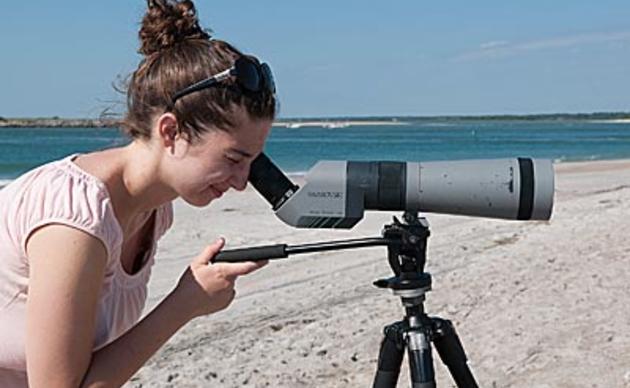Habitat loss and degradation as a result of human influences are the greatest threats to birds and bird populations. The lives of birds are marked by their activity during certain times of year, and the habitat and food sources they need to support each activity. A bird may breed in one area, migrate through another and winter in yet another. Birds are often on the move, but at the same time, they can be very loyal to the places they visit during each phase of their life-cycle. Audubon’s job is to make sure that when bird species return to places that they need to keep surviving through a phase of their life-cycle, they find what they need: appropriate food sources and the right kind of habitat. Habitats for nesting, foraging, migration and wintering birds are essential to bird survival, and the conservation of these areas is critical.
Coasts, a strategic initiative of the National Audubon Society, takes a full life-cycle approach to the conservation of coastal birds by focusing on the protection of key sites and habitats that shore-dependent birds require at critical points in their annual cycle. The program combines local community engagement, the best available science and proven, site-based conservation methods to stabilize and recover populations of coastal birds. The cumulative effect of full life-cycle conservation will be to recover declining populations, achieve no net loss of habitat and stabilize populations by 2030.
- This means that wherever a bird may go to breed, nest or winter, and the migration pathways in between, will be the focus of Audubon’s protection efforts for high priority species. We are working across state and country boundaries for the protection of birds that spend any part of their life in North Carolina.
While many coastal species need our help, birds that are listed as species of concern will not have long term survival without our help. Without human support and management, these species will be lost forever. The coastal species of concern in North Carolina include: American Oystercatcher, Piping Plover, Wilson's Plover, Red Knot, Western Sandpiper, Semipalmated Sandpiper, Sanderling, Common Tern, Least Tern and Black Skimmer.
Over the next decade, Audubon North Carolina will:
- Identify sites that support significant populations of target species and protect them.
- Foster proper stewardship and management of a network of sites that support target species throughout their life-cycle.
- Protect the 21 Coastal Sanctuaries and expand our network of Audubon sanctuaries.
- Recover declining populations, and protect the habitats to achieve stable and viable populations of coastal birds.
- Develop international partnerships at globally-significant sites, and complete full life-cycle conservation plans for target shorebird species by 2016.
- Strengthen regulations with the goal of achieving no net loss or degradation of habitats that are important for priority coastal species within 10 years.
- Engage Audubon's network in citizen-science projects to add to the existing knowledge of priority species at key sites.
- Inform and engage the public for their assistance in improving productivity, reducing mortality and stabilizing target populations.
- Engage Audubon's expansive chapter, national and partner networks to protect coastal birds and habitats.
Our team of scientists and conservation professionals will work to achieve these goals with the following tools:
- Acquisition and land protection
- Trained beach stewards and citizen scientists
- Social marketing, modern media and engagement tools
- Sound science, research and long-term monitoring
- Hemispheric partnerships (Bahamas)
- Partnerships with state, federal agencies, universities, communities and community groups
PARTNERS
This work is bigger than one organization. It takes a coalition of concerned citizens, nonprofits, government agencies and businesses to protect our coastal birds. Here is a list of our most active partners on the coast:
- US Army Corps of Engineers
- US Fish and Wildlife Service
- National Park Service
- US Geological Survey
- National Fish and Wildlife Foundation
- NC Coastal Federation
- NC Coastal Land Trust
- NC National Estuarine Research Reserve
- NC State University
- University of NC at Wilmington
- Southern Environmental Law Center
- Defenders of Wildlife
- National Parks and Conservation Association
- Sierra Club
- BirdLife
- Bahamas National Trust
- Town of Wrightsville Beach
- Wrightsville Beach Elementary School
- Cape Fear Garden Club
- Audubon chapters, many local community groups and volunteers.
How you can help, right now
Donate to Audubon
Help secure the future for birds at risk from climate change, habitat loss and other threats. Your support will power our science, education, advocacy and on-the-ground conservation efforts.
Sign Up For Our eNewsletter
Keep up-to-date on all that happens with Audubon North Carolina's research, events and volunteer opportunities.





